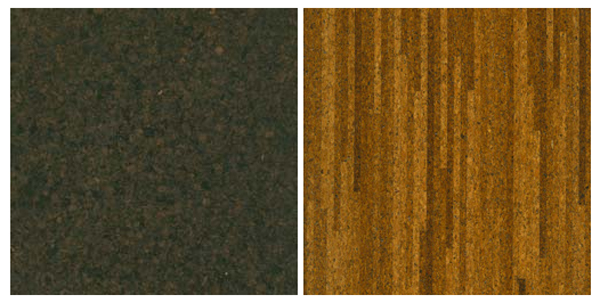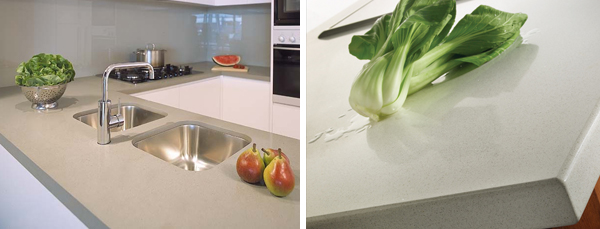There are two major material decisions that we still haven’t finalized: our countertops and our flooring. I know, I know…we talked about cork here and here, and completely had our minds made up here, but as things evolve we are rethinking our flooring one more time. Bottom line – we still love cork. But the two major considerations in the type of cork have changed. #1. We now have a fancy, perfectly level subfloor throughout the whole space. This means we could do a glue down tile rather than a floating system. The advantage? The glue down tile is a through-body product, meaning it’s the same color all the way through (the plank, floating system is a thin veneer over a natural color cork). Which brings us to consideration #2. We have a large dog. While our earlier cork test was mostly a success, there was one event that became cause for concern. One evening, in a rare burst of golden retriever energy, Bailey leapt off the bed and skidded across the cork plank sample that we had set up at the bedroom door way. His excessively furry paws couldn’t stop the claw action. The result was a 6″ gauge that wasn’t too deep, but enough to expose the natural color cork below. We also knew that creating a bigger, more open space would only encourage such behavior.
So, even though we loved the color and pattern of our first choice, we’re back to cork tiles and have narrowed it down to two choices:

On the left we have a dark brown cork that is created from a steaming process (since cork does not naturally occur in this color). We love that it is different and it seems to go with our other color palette. We also love the “strip” pattern on the right, which is fabricated from scraps of other cork to achieve the variation in golden brown hues. The patterned option involves more labor to produce, so it’s a bit more expensive – but because we’ll be covering most of our floors, we want to make the right choice! Also, both options can be ordered with a wax finish (which we’ve found is the way to go since it allows spot repairs without having to refinish the whole floor).
Now on to the next challenge – back in January we talked about our top two counter choices. Since then, we have secretly fallen for the quartz product (below, left), which would be about $60-$70/SF (installed). This quartz comes in either a super snow white or a warmer off-white hue – neither of which are a perfect fit with the rest of our palette. Then, at our post-IKEA trip to Ecohaus last weekend we saw this. Eco quartz countertops are made with 75% recycled product and bound by corn resin! They’re also one of the few green residential products I’ve seen that is Cradle To Cradle certified. Best of all, their white color, “polar cap” (below, right) has flecks of blue-gray that would fit right in with our new cabinets (we would do a simple 2 cm square edge though, not the built-up version shown in the photo). The downside – it’s expensive. Very expensive…as in, $90/SF (installed) expensive. Our number one sustainable goal with the countertops has been to pick something that is both durable and a color/pattern that we could be happy with long term. Recycled content and eco-friendly resins would be icing on the cake, but we’ll have to weigh the added costs with our overall budget goals. Like the sink and faucet, we recognize the countertops will get a lot of daily action so making the right decision will be key.

So now it’s time to take it to the people. Darker or lighter cork? More affordable quartz or super sustainable, crazy expensive quartz? Or…are there still more options yet to consider? Now is the time!